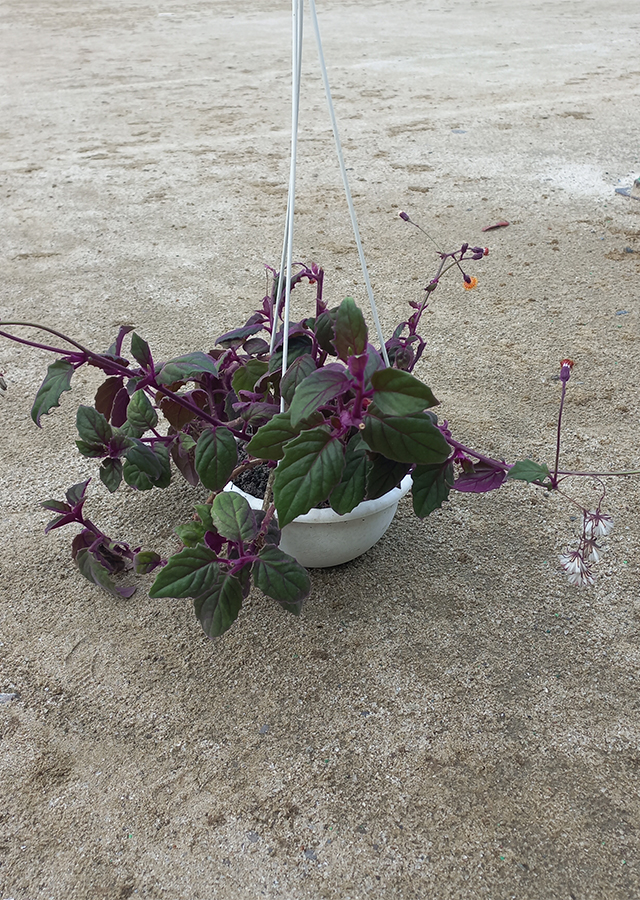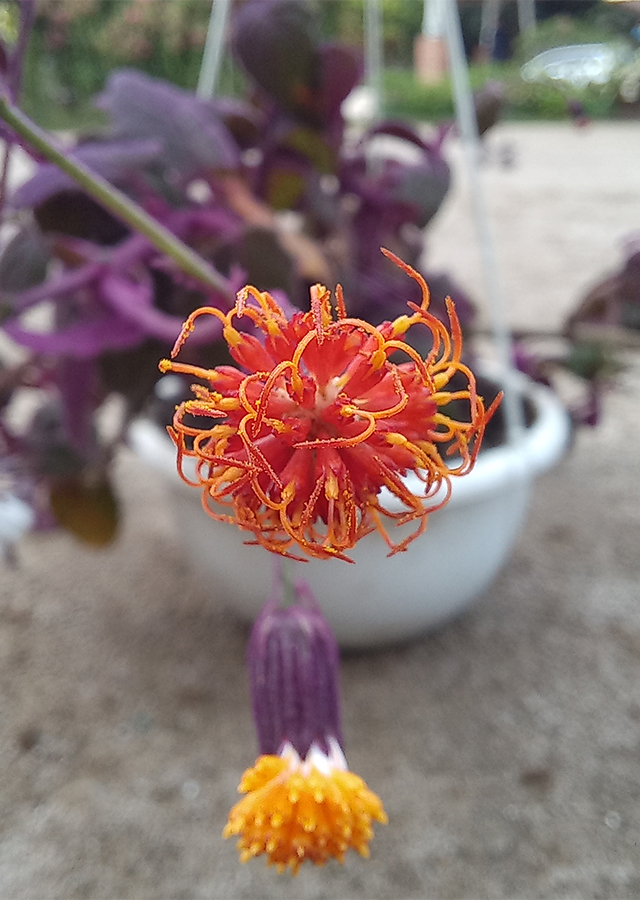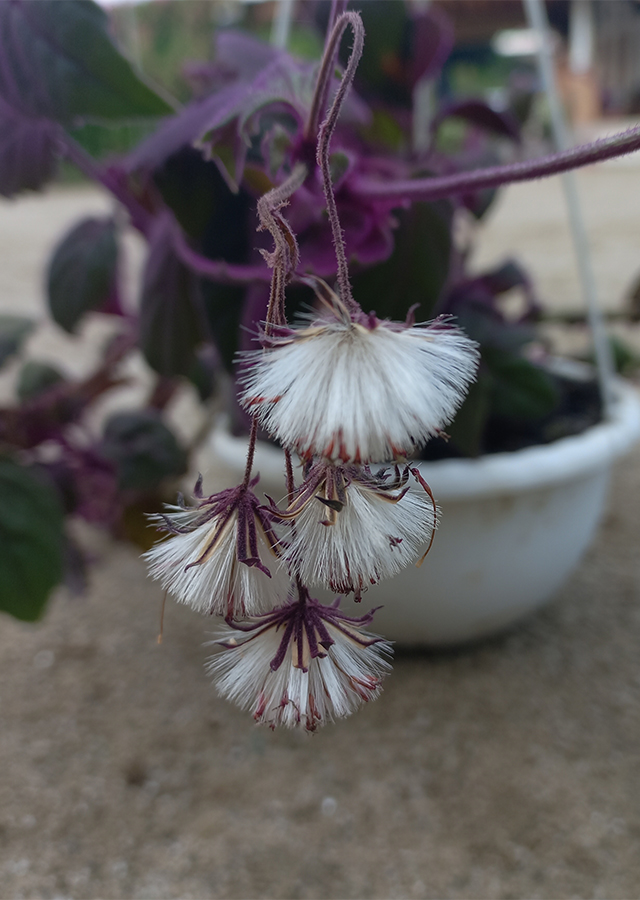Purple Passion
Gynura aurantiaca (Blume) DC.
Asteraceae
Location in our garden
Green House



Synonym
Cacalia aurantiaca Blume
Crassocephalum aurantiacum (Blume) Kuntze
Senecio blumeanus Sch.Bip.
Habitus
Herbaceous. Annual herb, up to 0.6 m
Part Used
Leaves
Growing Requirements
Need Shade
Habitat
Terrestrial
Overview
Native to Java, Sulawesi, Sumatra and introduced to Colombia, Costa Rica, El Salvador, Florida, Guatemala, Honduras, India, Leeward Islands, Philippines, Trinidad-Tobago, Vietnam, Zaïre. This plant is best grown in hanging baskets and is renowned as an ornamental for its unusual velvety purple leaves and stems.
Vernacular Names
Information not found. Need further search.
Agroecology
Thrives in bright spot with indirect sunlight or partial shade where direct sunlight in a day is only 2-6 hours. Leaves produce better color under better light conditions. Prefers fertile loam soil with good drainage and moisture.
Morphology
- Stems - erect, hairy, purple.
- Leaves - green, ovate to elliptical with scalloped edges. The leaf surface is covered with bright purple hairs.
- Flowers - the inflorescence is a corymb and the flowers are orange-yellow.
Cultivation
Propagated by stem cuttings.
Chemical Constituents
Saponins, flavonoids, tanins, and polyphenols.
Traditional Medicinal Uses
Information not found. Need further search.
Part Used
Reference Sources
- Royal Botanic Gardens. 2021. Plants of the World Online: Gynura aurantiaca (Blume) DC.. http://www.plantsoftheworldonline.org/taxon/urn:lsid:ipni.org:names:211219-1. 17-03-22.
- Flora Fauna Web. 2021. Gynura aurantiaca. https://www.nparks.gov.sg/florafaunaweb/flora/2/0/2052. 17-03-22.
- North Carolina Extension Gardener Plant Toolbox. Gynura aurantiaca. https://plants.ces.ncsu.edu/plants/gynura-aurantiaca/. 17-03-22.

